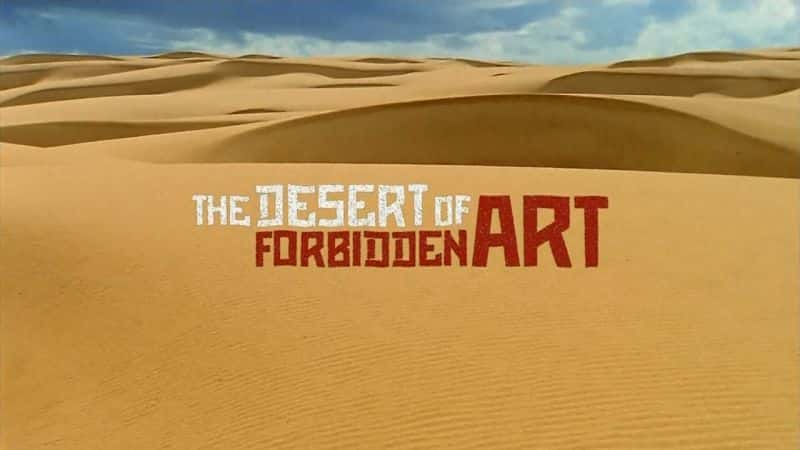|
|

纪录片《禁艺的沙漠 The Desert of Forbidden Art 》 - 纪录片1080P/720P/360P高清标清网盘迅雷下载
The Desert of Forbidden Art
一般资料:由美国Ferrera主办的艺术纪录片由PBS作为PBS独立镜头系列的一部分发布于2011年 - 英语叙述
资料如何禁止苏联艺术的宝库,最终藏在乌兹别克斯坦的遥远的沙漠中,在共产党资助的博物馆中藏起来了?感谢一个人的激情和大胆,伊戈尔·萨维茨基,他们喜欢这项工作太多,让镇压莫斯科政府永远灭绝它。在20世纪20年代,一小群画家离开了莫斯科,圣彼得堡和其他寒冷的沟通1,700英里,将Bolshevik革命带入苏联中亚的异国情调南部。但是,他们遇到了一个独特的伊斯兰文化,因为大溪地是为了高地的塔希提,并开发出一个惊人的原创风格,融合了欧洲现代主义,融合了几个世纪的东部传统。1932年,他们的丑闻表现主义审美被驻扎禁止了有利于社会主义现实风格的宣传绘画。许多艺术家在酷刑,监禁和死亡威胁下摧毁了他们的作品或藏在阁楼和床下。困扰着年轻的Igor Savitsky,这是一个沮丧的贵族提取画家,他在卡拉卡尔巴克斯坦降落(乌兹别克斯坦的自治西北共和国)在考古挖掘。他被该地区的民间艺术着迷。数十年的苏维埃化对这些鲜明的种族文物贬低了收集精心制作的手工服装,珠宝,地毯等最初得到了Savitsky品牌的“垃圾人”。最终,他的位置远离莫斯科审查,也允许他追求成为他真正的激情:寻找和获取模式RN艺术如此脱离同步,与官方品味几乎被谴责。要购买国家批准的艺术,而且拯救了40,000名禁止作品。虽然一位独立艺术家本人,他将现金从同一当局支付的现金支付,这些艺术在禁止它并积累了世界上第二大俄罗斯前卫艺术集合。博物馆萨维斯基花了,仍然冒着生活拥有他救出的作品,但虽然苏联崩溃了,乌兹别克斯坦获得了独立,但该系列仍处于迫在眉睫的危险。该区域的气候壮观干燥,导致帆布的加速崩解。和激进的伊斯兰教的区域崛起直接进入了基督教徒的十字准线o可能会发现艺术作为斯大林的“退化”。纽约时报是“20世纪俄罗斯艺术最卓越的收藏之一”,位于世界上最贫困地区之一,今天这些无价的绘画也是一个腐败官僚和西方艺术奸商的利润丰厚的目标。濒危收藏们邀请了问题 - 谁的责任是保留一个国家的文化珍品?本金斯利,莎莉领域,以及Ed Asant的圣人和艺术家的日记和字母。2011年4月5日的人们广播播放了2011年4月5日录像带:X264视频比特率:3714 kbps视频纵横比:1.778:1(16:9)视频分辨率:1280x720帧率:29.97 FPS音频编解码器:AAC音频比特率:135 kbps 48/24 kHz音频通道:2 aUdio语言:英语运行时间:00:56:25尺寸:1.54 GB来源:1080i OTA ATSC编码:Joeyjoejoe
纪录片关键词:
【禁王艺术的沙漠,围绕苏联,食品群岛(Kilauhm制作),纪录片,偏僻纪念,露天弗洛伊德:绘制生命,制作毛泽东,发现 - 伊斯兰建筑和艺术,行星地球II第4部分沙漠,艺术俄罗斯,Carl Faberge(BBC)的天才】
【艺术,美国FerraRa,PBS,PBS独立镜头,2011,英语】
The Desert of Forbidden Art,Across the Soviet Union,Cannibal Island (Kilaohm Productions),Documentary,Hermitage Revealed,Lucian Freud: Painted Life,Making Mao,Paradise Found - Islamic Architecture and Arts,Planet Earth II Part 4 Deserts,The Art of Russia,The Genius of Carl Faberge (BBC)
Arts,America Ferrera,PBS,PBS Independent Lens,2011,English
General Information:
Arts Documentary hosted by America Ferrera, published by PBS broadcasted as part of PBS Independent Lens series in 2011- English narration
Information
How did a treasure trove of banned Soviet art worth millions of dollars end up stashed in the far-off desert of Uzbekistan in a communist-funded museum? Thanks to the passion and daring of one man, Igor Savitsky, who loved the work too much to let the repressive Moscow government extinguish it forever.
In the 1920s, a small group of painters left Moscow, St. Petersburg, and other colder climes traveling 1,700 miles to bring the Bolshevik Revolution to the exotic southern reaches of Soviet Central Asia. But instead they encountered a unique Islamic culture, as exotic to them as Tahiti was for Gauguin, and developed a startlingly original style, fusing European modernism with centuries old Eastern traditions.
In 1932, their scandalously expressionist aesthetic was banned by Stalinists in favor of propaganda paintings in the Socialist Realist style. Many of the artists destroyed their works or stashed them in attics and beneath beds under the threat of torture, imprisonment, and death.
Their plight inspired young Igor Savitsky, a frustrated painter of aristocratic extraction who'd landed in Karakalpakstan (Uzbekistan's autonomous northwestern republic) on an archaeological dig. He became fascinated by the region's folk art. Decades of Sovietization had devalued such distinctively ethnic artifacts to the point that collecting elaborate handmade garments, jewelry, carpets, and the like initially got Savitsky branded a "rubbish man." Eventually, his location far from Moscow censorship also allowed him to pursue what became his real passion: finding and acquiring modern art so out of sync with official taste that it was virtually condemned.
Pretending to buy state-approved art, Savitsky instead daringly rescued 40,000 forbidden works. Though a penniless artist himself, he cajoled the cash to pay for the art from the same authorities that were banning it and amassed the second largest collection of Russian avant-garde art in the world.
Today the museum Savitsky spent and risked his life for still holds the works he rescued, but although the Soviet Union collapsed and Uzbekistan gained its independence, the collection remains in imminent danger. The climate in the area is spectacularly dry, causing an accelerated disintegration of the canvases. And the regional rise of militant Islam puts Savitsky’s museum directly in the crosshairs of fundamentalists who might find the art as “degenerate” as Stalin did.
Described by The New York Times as "one of the most remarkable collections of 20th century Russian art" and located in one of the world's poorest regions, today these priceless paintings are also a lucrative target for corrupt bureaucrats and Western art profiteers. The endangered collection invites the question — whose responsibility is it to preserve a country’s cultural treasures?
Ben Kingsley, Sally Field, and Ed Asner voice the diaries and letters of Savitsky and the artists.
Originally broadcast on April 5, 2011
Technical Specs
Video Codec: x264
Video Bitrate: 3714 kbps
Video Aspect Ratio: 1.778:1 (16:9)
Video Resolution: 1280x720
Framerate: 29.97 fps
Audio Codec: AAC
Audio Bitrate: 135 kbps 48/24 KHz
Audio Channels: 2
Audio Language: English
Run-Time: 00:56:25
Size: 1.54 GB
Source: 1080i OTA ATSC
Encoded by: joeyjoejoe
~~~~~~~~~~~~~~~~~~~~~~~~~~~~~~~~~~~~~~~~~~
纪录片《禁艺的沙漠 The Desert of Forbidden Art 》 - 纪录片1080P/720P/360P高清标清网盘迅雷下载
下载地址:
(本链接可能为BT下载方式,需自备BT类下载工具。推荐使用115网盘离线下载,或使用其他具有离线下载功能的网盘)
游客 文件下载链接就在这里,在您回复评论成功后才能显示。
请勿回复无意义的灌水内容。下拉页面到最底部回复或者 【点击此处快捷回复】,回复后返回此处即可查看下载链接。 如您没注册本站会员,可以点击 注册本站,注册后即可回复下载。 |
小贴士:【影视自媒体解说文案请移步:夏至文案解说网 www.xiazhi.vip】上一篇:纪录片《深紫色:日本制造 Deep Purple: Made in Japan 》 - 纪录片1080P/720P/360P高清标清网盘迅雷下载下一篇:纪录片《设计规则 Design Rules 》 - 纪录片1080P/720P/360P高清标清网盘迅雷下载
|